| Date | Text | |
|---|---|---|
30 Nov 1948
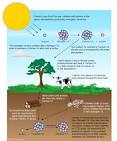
Radiocarbon dating |
Radiocarbon dating (chemistry) Radiocarbon dating technique discovered by Willard Libby and his colleagues at the University of Chicago—work for which Libby will receive the Nobel prize in 1960. |
|
30 Nov 1948

Dorothy Hodgkin |
Dorothy Hodgkin (chemistry) A group including Dorothy Hodgkin publish the three-dimensional molecular structure of penicillin, demonstrating that it contains a β-lactam ring. |
|
30 Nov 1948

Herbert Butterfield |
Herbert Butterfield (history of science) Herbert Butterfield publishes The Origins of Modern Science, 1300-1800. |
|
30 Nov 1948
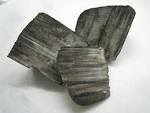
lithium |
lithium (medicine) The use of lithium salts to control mania is rediscovered by Australian psychiatrist John Cade, the first mood stabilizer. |
|
30 Nov 1948

intraocular lens |
intraocular lens (medicine) First implant of intraocular lens, by Sir Harold Ridley |
|
30 Nov 1948
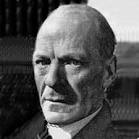
Gilbert Ryle |
Gilbert Ryle (philosophy) Gilbert Ryle's book The Concept of Mind, a founding document in the philosophy of mind, is published. |
|
30 Nov 1948

Freeman Dyson |
Freeman Dyson (physics) Freeman Dyson demonstrates the equivalence of the formulations of quantum electrodynamics existing at this time, incidentally inventing the Dyson series. |
|
30 Nov 1948

Lanczos tensor |
Lanczos tensor (physics) The Lanczos tensor is introduced in general relativity by Cornelius Lanczos. |
|
30 Nov 1948

Konrad Lorenz |
Konrad Lorenz (zoology) Konrad Lorenz publishes King Solomon's Ring (Er redete mit dem Vieh, den Vögeln und den Fischen). |
|
11 Jan 1949
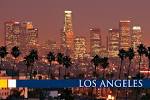
Los Angeles, California |
Los Angeles, California (meteorology) Los Angeles, California receives its first recorded snowfall. |
|
17 Jan 1949
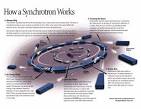
Synchrotron |
Synchrotron In 1949, for the first time, full energy was released by the first synchrotron which was installed at the Radiation Laboratory, University of California, Berkeley. It was invented by Edwin Mattison of the same university, and would accelerate electrons by virtue of their negative charges, using a betatron-type magnet that weighed about 8 tons. The synchrotron was constructed at the General Electric Research Laboratory at Schnectady, N.Y. by Dr. Herbert C. Pollock and Willem F. Westendorp. |
|
25 Jan 1949

Paul Nurse |
birth Paul Nurse Paul Nurse, English cell biologist, winner of Nobel Prize in Physiology or Medicine. |
|
19 Feb 1949

Danielle Bunten Berry |
birth Danielle Bunten Berry Danielle Bunten Berry, born Dan(iel Paul) Bunten (died 1998), American software developer. |
|
22 Feb 1949

Félix d'Herelle |
death Félix d'Herelle Félix d'Herelle (died 1873), French-Canadian microbiologist, a co-discoverer of bacteriophages. |
|
30 Mar 1949

Friedrich Bergius |
death Friedrich Bergius Died 30 Mar 1949 at age 64 (born 11 Oct 1884). Friedrich Karl Rudolf Bergius was a German chemist who invented a process to convert coal dust and hydrogen directly into gasoline and lubricating oils without isolating intermediate products (Stuttgart, 25 Jun 1921). Bergius succeeded, during distillation of coal, in forcing hydrogen under high pressure to combine chemically with the coal, transforming more carbon from the coal into oils than is possible with conventional distillation. To solve heat distribution and temperature regulation problems, Bergius invented treating a mixture of pulverized coal in oil with the gas under high pressure. For his work in developing the chemical high pressure hydrogenation method necessary for this process he shared the 1931 Nobel Prize for Chemistry with Carl Bosch of Germany. |
|
01 Apr 1949

Manchester Mark 1 |
Manchester Mark 1 (computer science) Manchester Mark 1 computer operable at the University of Manchester. |
|
05 Apr 1949

Judith Resnik |
birth Judith Resnik Judith Resnik (died 1986), American astronaut. |
|
06 May 1949

EDSAC |
EDSAC (computer science) EDSAC, the first practicable stored-program computer, runs its first program at Cambridge University, to calculate a table of squares. |
|
10 May 1949
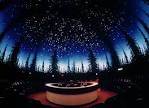
Planetarium |
Planetarium In 1949, the first planetarium in the U.S. owned by a university opened at the University of Chapel Hill, North Carolina. The Morehead Planetarium, one of the largest in the U.S., was the gift of John Motley Morehead III (1870-1965), class of 1891. The Morehead Building, erected at the north end of the campus, included the 68-ft dome, 300-seat Star Theater with a Zeiss Model II Star Projector. Morehead was an industrialist and chemist who commercially developed production of calcium carbide, basic to manufacturing acetylene gas, which led to the founding of Union Carbide Corporation. As the U.S. space program began, the planetarium provided important celestial navigation training for U.S. astronauts in the Mercury program. |
|
24 May 1949

Tomaž Pisanski |
birth Tomaž Pisanski Tomaž Pisanski, Slovenian mathematician. |
|
26 May 1949
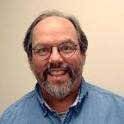
Ward Cunningham |
birth Ward Cunningham Ward Cunningham, American computer programmer. |
|
27 May 1949

Ægidius Elling |
death Ægidius Elling Ægidius Elling (born 1861), Norwegian gas turbine pioneer. |
|
10 Jun 1949
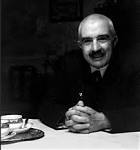
Filippo Silvestri |
death Filippo Silvestri Died 10 Jun 1949 at age 75 (born 22 Jun 1873). Italian entomologist, best remembered for his pioneering work in polyembryony, the development of more than one individual from a single fertilized egg cell. During the late 1930s Silvestri discovered that this type of reproduction occurs in the insect species Litomatix truncatellus. His finding, resulting from a close analysis of the reproductive stages, cell division, and egg structure of these parasitic hymenopterans, attracted the attention of many biologists because of its implications for the nature of the egg and the causes of multiple generation. He also studied the morphology and biology of the Termitidae, the most highly evolved family of termites. He also made a comparative study of the form and structure of the millipede and the centipede. |
|
14 Jun 1949
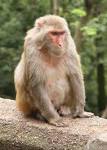
Rhesus Monkey |
Rhesus Monkey (astronomy and space ) Albert II, a Rhesus Monkey, becomes the first mammal in space, in a U.S.-launched V-2 rocket, reaching an altitude of 83 miles (134 km) but dying on impact after a parachute failure. |
|
25 Jun 1949

Neomycin |
Neomycin In 1949, scientists in New York announced that the anti-tuberculosis drug Neomycin had been fully tested on animals. It was first isolated by the American microbiologist Selman Waksman from a strain of the bacterial species Streptomyces fradiae which produces it naturally. It is now used mainly topically (because of renal toxicity) in the treatment of skin and mucous membrane infections, wounds, and burns. He received the Nobel Prize in Physiology or Medicine 1952 for his earlier isolation and development of the antibiotic Streptomycin. The term "antibiotic" in the medical context was defined by Waksman, and he discovered an impressive number of them. |
|
05 Aug 1949
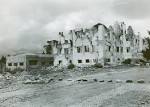
Ambato earthquake |
Ambato earthquake (earth sciences) Ambato earthquake in Ecuador, measuring 6.8 on the Richter magnitude scale. |
|
05 Aug 1949

Ernest Fourneau |
death Ernest Fourneau Ernest Fourneau (born 1872), French medicinal chemist. |
|
23 Sep 1949

Truman announces Soviet A-bomb |
Truman announces Soviet A-bomb In 1949, President Truman shocked America with a terse announcement: “We have evidence that within recent weeks an atomic explosion occurred in the USSR.” The alarm stimulated activity in scientific and political circles, and an arms race was the clear response when on 31 Jan 1950, President Harry S. Truman announced a program to develop the American hydrogen bomb. “I have directed ... work on all forms of atomic weapons, including the so called hydrogen or superbomb. Like all other work in the field of atomic weapons, it is ... consistent with the overall objectives of our program for peace and security ... until a satisfactory plan for international control of atomic energy is achieved.” |
|
24 Nov 1949
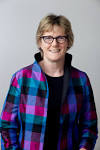
Sally Davies |
birth Sally Davies Sally Davies, English Chief Medical Officer. |
|
12 Dec 1949

European Nuclear Institute |
European Nuclear Institute In 1949, a recommendation to establish an all-European Institute of Nuclear Physics was adopted by the European Cultural Conference on its closing day. The original proposal was made in a message sent by Louis de Broglie. Raoul Dautry of the French Atomic Energy Commission said that no single European country was large enough to mobilize enough resources to match U.S. standards in atomic research. The four-day meeting was attended by 150 leaders of European thought. UNESCO supported the idea. The present CERN laboratory (Centre Européenne de Recherche Nucléaire) was ratified on 29 Sep 1954, by twelve founding Member States, but official ground-breaking took place earlier, on 17 May 1954. |